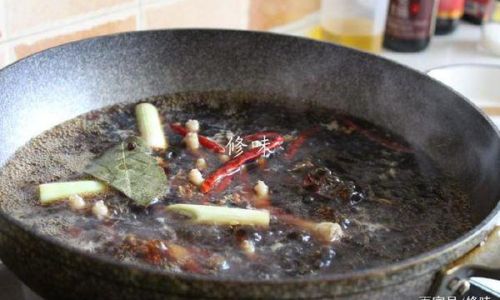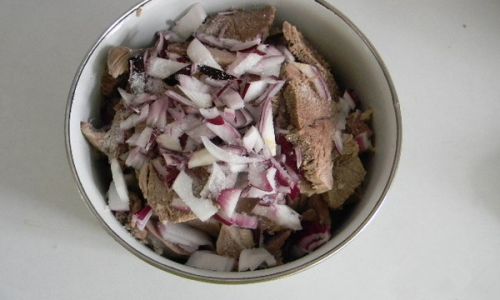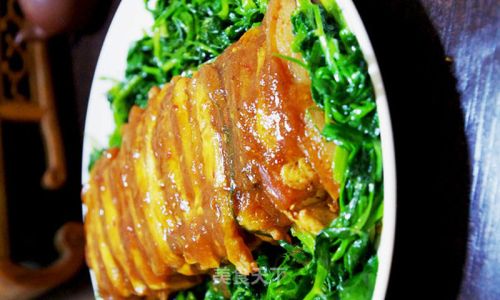Introduction
Pork shred noodles, also known as “Rou Si Mian” in Chinese cuisine, is a dish that combines the savory flavors of tender pork shreds with the comforting warmth of a hearty noodle soup. This dish is a staple in many Chinese households and street food stalls, offering a perfect blend of flavors that cater to both the palate and the soul. Whether you’re a seasoned chef or a home cook looking to explore new culinary adventures, making pork shred noodles at home can be an incredibly rewarding experience. In this comprehensive guide, we’ll walk you through every step of the process, ensuring you create a delicious and authentic bowl of pork shred noodles that rivals even the best restaurants.
Understanding the Ingredients
Before diving into the recipe, let’s break down the key ingredients and their roles in creating the perfect bowl of pork shred noodles.

-
Pork Shoulder or Belly: These cuts are ideal for shredded pork due to their high fat content, which keeps the meat moist and flavorful during cooking.
-
Noodles: Typically, fresh egg noodles or hand-pulled noodles are used. They absorb the broth beautifully and offer a satisfying chewiness. Dried noodles can also be used, but they may require adjustments in cooking time.
-
Broth: The base of the broth is usually pork bone broth, which provides a rich and flavorful foundation. Chicken broth can be used as a substitute, but it will alter the taste slightly.
-
Aromatics: Garlic, ginger, and scallions are essential for adding layers of flavor to the broth and the pork.
-
Seasonings: Soy sauce, dark soy sauce for color, Shaoxing wine (or dry sherry), sesame oil, white pepper, and sugar are used to season both the pork and the broth.
-
Garnishes: Common garnishes include chopped green onions, cilantro, and sometimes chili oil or Sichuan peppercorns for an extra kick.
Step-by-Step Recipe
Step 1: Preparing the Pork
-
Selecting the Pork: Choose a piece of pork shoulder or belly that has a good balance of fat and lean meat. The fat will melt during cooking, adding flavor and moisture to the shredded pork.
-
Cleaning and Cutting: Rinse the pork under cold running water to remove any blood or impurities. Pat it dry with paper towels. Cut the pork into large chunks, about 2-3 inches in size. This will make it easier to shred later.
-
Marinating the Pork: In a large bowl, combine the pork chunks with a few slices of ginger, a few cloves of garlic (smashed), 2-3 tablespoons of soy sauce, 1 tablespoon of dark soy sauce, 2 tablespoons of Shaoxing wine, 1 teaspoon of white pepper, and 1 teaspoon of sugar. Mix well to ensure the pork is evenly coated. Let it marinate for at least 30 minutes, preferably overnight in the refrigerator for maximum flavor infusion.
Step 2: Making the Broth

-
Preparing the Bones: If using pork bones for the broth, rinse them thoroughly under cold water. You can also use pork knuckles or pork neck bones for added flavor and gelatin.
-
Boiling the Bones: Place the bones in a large pot and cover with cold water. Bring to a boil over high heat. Skim off any foam or impurities that rise to the surface. This step helps to clean the bones and remove any unwanted odors.
-
Simmering the Broth: Once the water is clear, add a few slices of ginger, a couple of whole garlic cloves, and a handful of scallions, tied into a bundle. Reduce the heat to low and let the broth simmer gently for at least 2-3 hours, preferably longer for a richer flavor. If time is a constraint, you can use a pressure cooker to speed up the process.
-
Seasoning the Broth: After simmering, strain the broth through a fine-mesh sieve to remove the bones and aromatics. Taste and adjust the seasoning with additional soy sauce, salt, and white pepper as needed. The broth should be flavorful but not overly salty.
Step 3: Cooking the Pork
-
Preparing the Pot: Remove the marinated pork chunks from the refrigerator and let them come to room temperature. In a heavy-bottomed pot or Dutch oven, heat a small amount of oil over medium-high heat.
-
Browning the Pork: Sear the pork chunks on all sides until they are golden brown and have developed a nice crust. This step helps to lock in juices and add depth to the final dish.
-
Adding the Broth: Pour in enough broth to cover the pork by about an inch. Bring the mixture to a simmer, then reduce the heat to low. Cover the pot and let the pork cook slowly for about 1.5 to 2 hours, or until the meat is very tender and can be easily shredded with a fork.
-
Shredding the Pork: Once the pork is cooked, transfer it to a large bowl using a slotted spoon. Let it cool slightly, then use two forks to shred the meat into thin strands.
Step 4: Preparing the Noodles
-
Cooking Fresh Noodles: If using fresh noodles, bring a large pot of salted water to a boil. Cook the noodles according to the package instructions until they are al dente. Drain and rinse them under cold water to prevent sticking.
-
Cooking Dried Noodles: If using dried noodles, soak them in hot water for about 10-15 minutes until they are pliable. Then cook them in boiling water for a few minutes until tender. Drain and rinse as above.

Step 5: Assembling the Dish
-
Heating the Broth: While the noodles are cooking, reheat the pork broth over medium heat. Taste and adjust the seasoning if necessary.
-
Plating: Divide the cooked noodles into individual bowls. Ladle hot broth over the noodles, ensuring they are fully submerged.
-
Adding the Pork: Top each bowl with a generous amount of shredded pork.
-
Garnishing: Add chopped green onions, cilantro, and a drizzle of sesame oil. If you like it spicy, add a teaspoon of chili oil or a sprinkle of Sichuan peppercorns.
Serving and Enjoying
Your pork shred noodles are now ready to serve. Serve them hot, with chopsticks and spoons for easy eating. Enjoy the tender pork shreds, the silky noodles, and the rich, flavorful broth in every bite. This dish is perfect on its own or paired with a simple side salad or pickled vegetables for a more complete meal.
Storage and Reheating
Leftover pork shred noodles can be stored in an airtight container in the refrigerator for up to 3 days. To reheat, simply place the noodles and broth in a microwave-safe bowl and heat until warm. Alternatively, you can reheat them on the stovetop, adding a splash of broth if needed to loosen the mixture.
Conclusion
Making pork shred noodles at home may seem like a daunting task, but with this detailed guide, you’ll find it’s not only achievable but also incredibly rewarding. The process, from selecting the right pork to simmering the broth and shredding the meat, allows you to create a dish that is bursting with flavor and texture. Whether you’re serving it to family and friends or enjoying it as a comforting meal for one, pork shred noodles are sure to become a staple in your culinary repertoire. So, gather your ingredients, roll up your sleeves, and start cooking—your taste buds will thank you!






0 comments